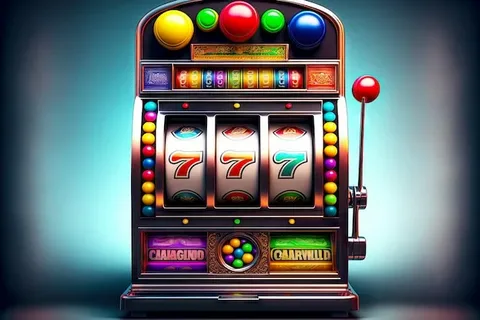Slot machines have come a long way since their mechanical beginnings in the late 19th century. What began as simple devices with a few spinning reels has transformed into an immersive digital experience. In this article, we explore the evolution of slot machines: from reels to digital, highlighting the major technological advancements and how they’ve reshaped the gaming landscape.
The Mechanical Beginnings
The history of slot machines dates back to the 1890s, when Charles Fey developed the first mechanical slot machine, the Liberty Bell. It featured three reels, each adorned with symbols like bells, horseshoes, and playing cards. Players would pull a lever to spin the reels, hoping to land a matching combination and win a prize.
These early machines were entirely mechanical, relying on gears and springs. Despite their simplicity, they became incredibly popular in bars, saloons, and casinos.
The Introduction of Electromechanical Slots
By the 1960s, technology had evolved enough to introduce electromechanical slot machines. Bally’s “Money Honey” was the first of its kind, combining electrical components with traditional mechanical reels. This innovation allowed for more complex features, such as higher payouts and flashing lights, giving rise to the modern casino slot floor.
These machines still had physical reels but were now powered by electric motors and offered a more engaging experience for players.
The Digital Revolution
The biggest shift in the evolution of slot machines: from reels to digital came with the rise of computer technology in the 1980s and 1990s. Video slots began to replace the traditional mechanical reels with virtual ones displayed on a screen. Random Number Generators (RNGs) took over the role of determining outcomes, making games more fair and unpredictable.
With digital technology, slot developers could now include advanced graphics, animations, bonus rounds, and multi-line betting options. These improvements not only made slots more entertaining but also increased their profitability for casinos.
Online Slots and Mobile Gaming
The rise of the internet and smartphones took the evolution of slot machines: from reels to digital to the next level. Online casinos began offering a wide variety of slot games that players could access from their homes or on the go. These games retained the excitement of traditional slots while adding the convenience of 24/7 availability and mobile compatibility.
Modern slot games often include themes from popular movies, music, and TV shows, making them more appealing to a broader audience.
The Future of Slot Machines
Looking ahead, the future of slots continues to be shaped by emerging technologies like virtual reality (VR), augmented reality (AR), and blockchain. These innovations promise to make slot gaming even more interactive, immersive, and secure.
As the evolution of slot machines: from reels to digital continues, one thing is certain: the thrill of spinning the reels—whether physical or virtual—will never go out of style.
Conclusion
From mechanical contraptions to high-tech digital experiences, the evolution of slot machines: from reels to digital reflects the broader trends in gaming and technology. With each leap forward, slot machines have become more engaging, accessible, and entertaining. Whether you’re pulling a lever or tapping a screen, the essence of the game remains the same: a moment of anticipation and the possibility of a big win.


